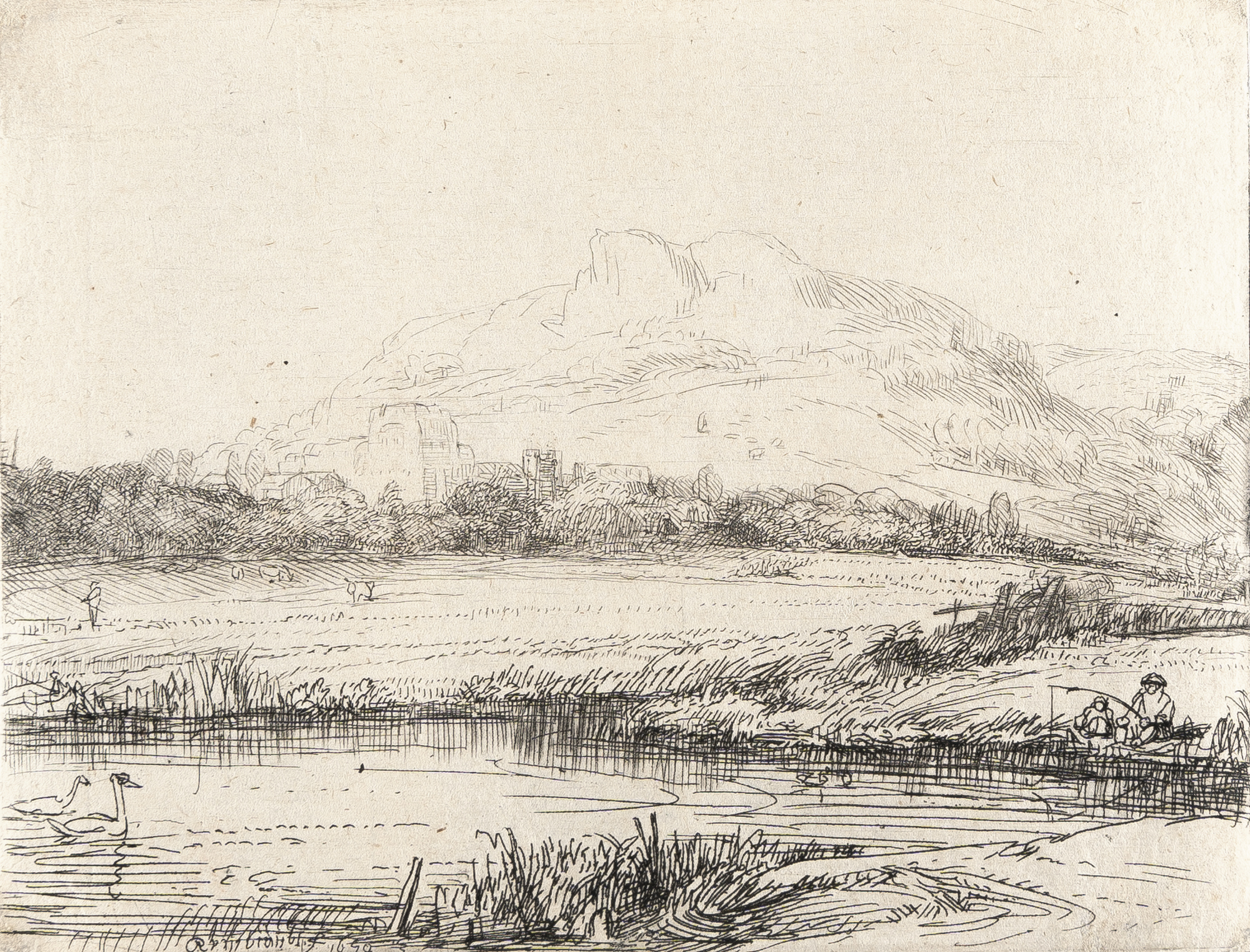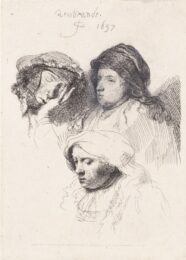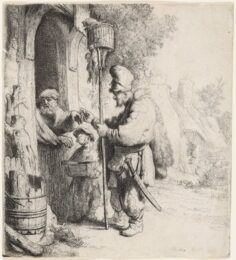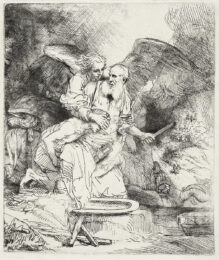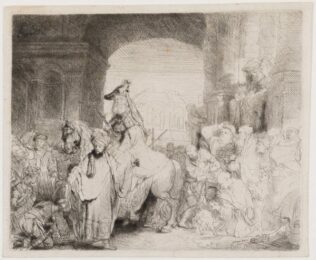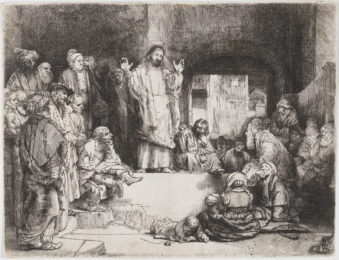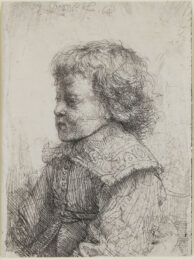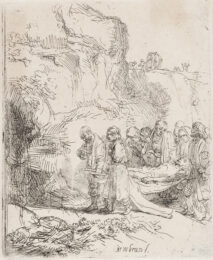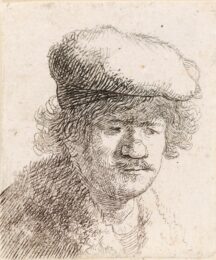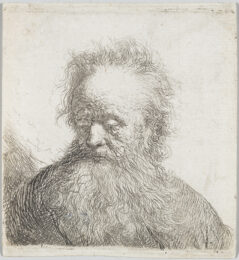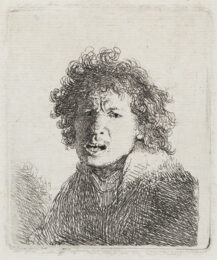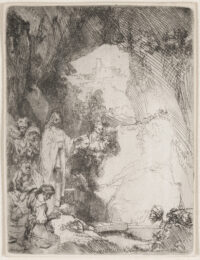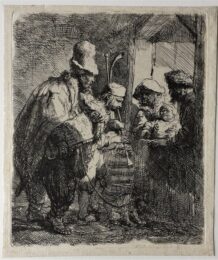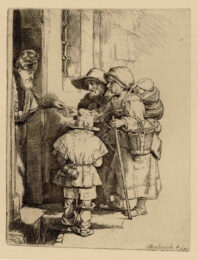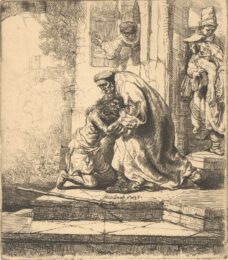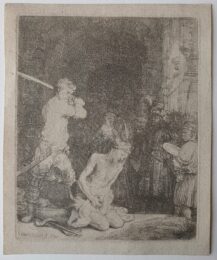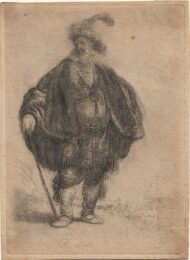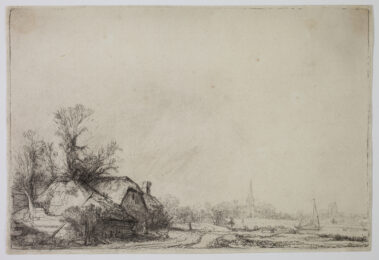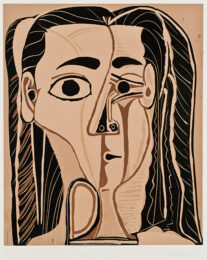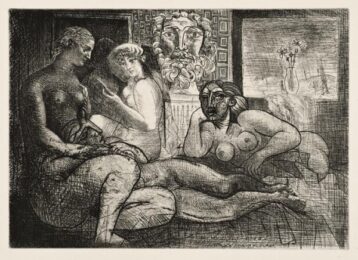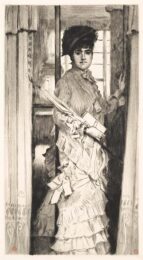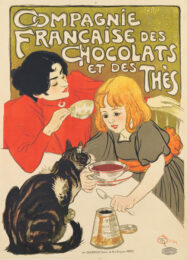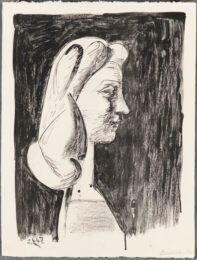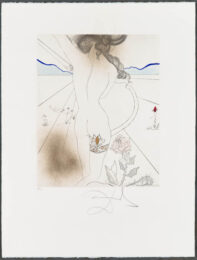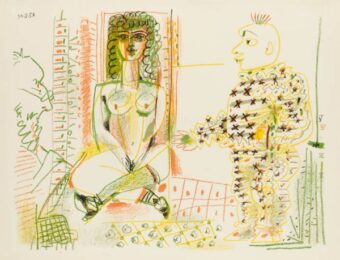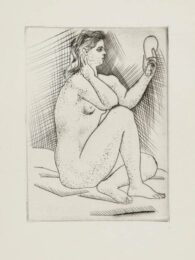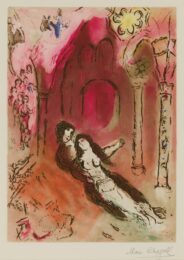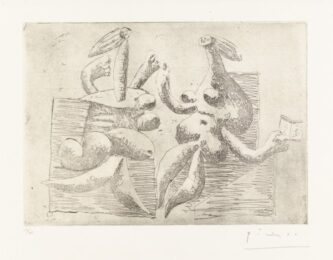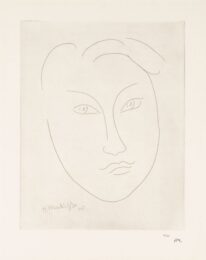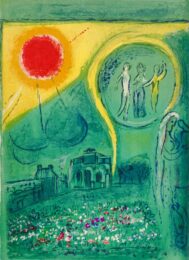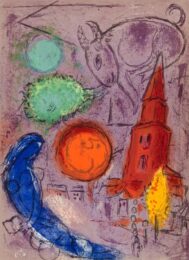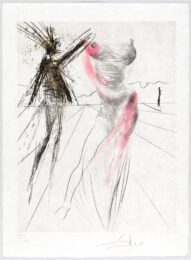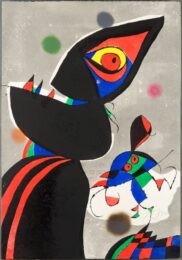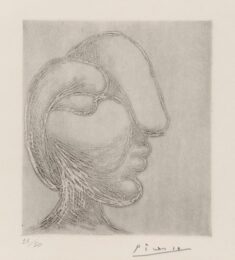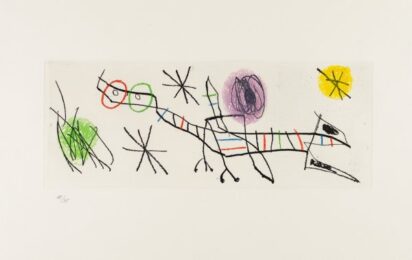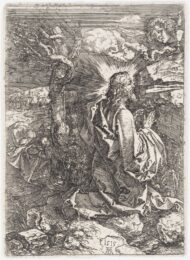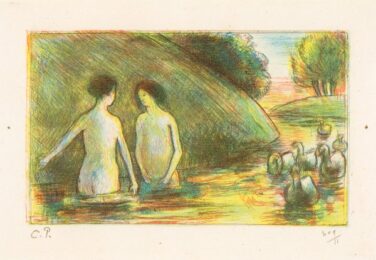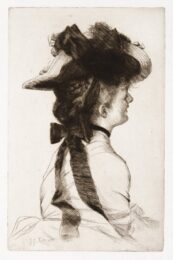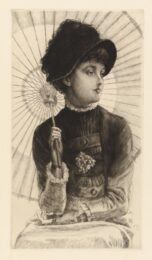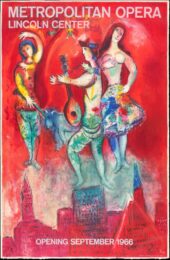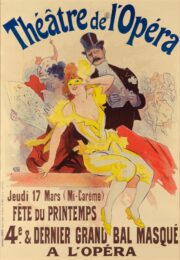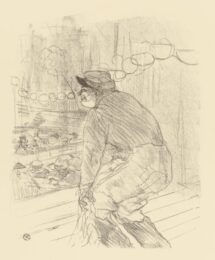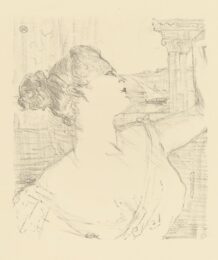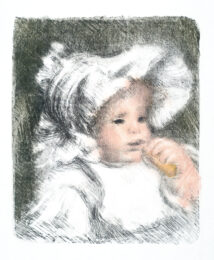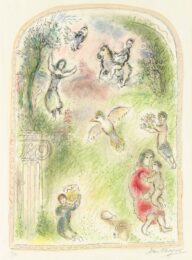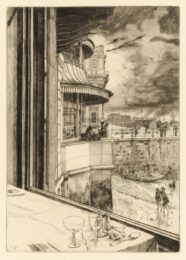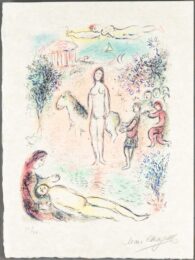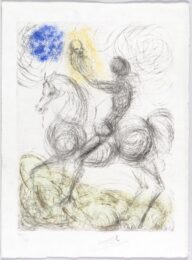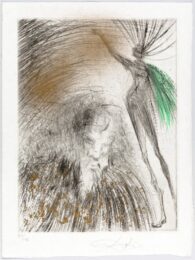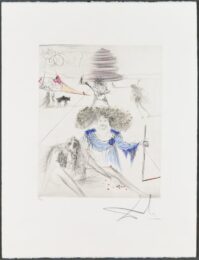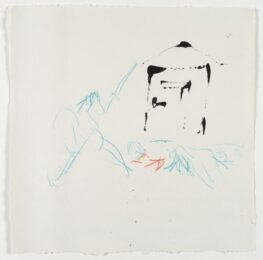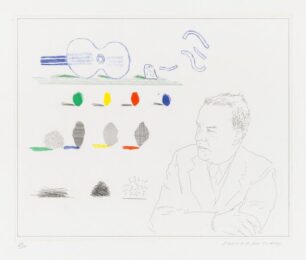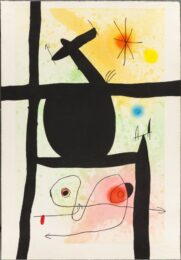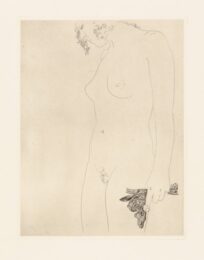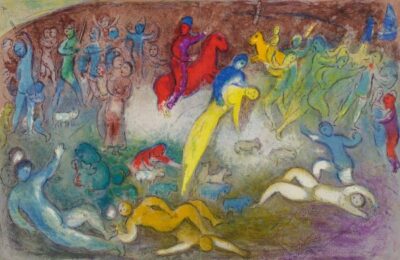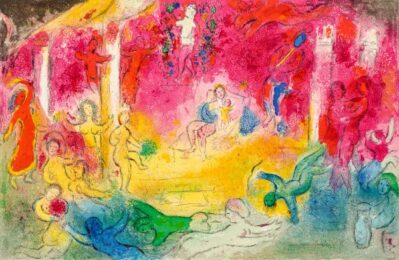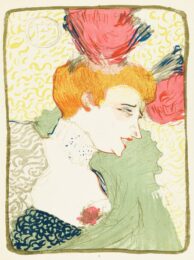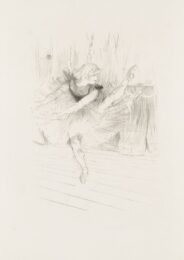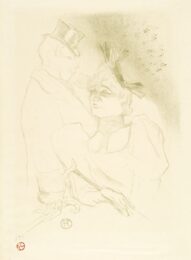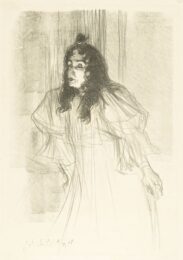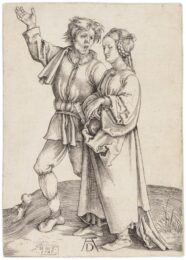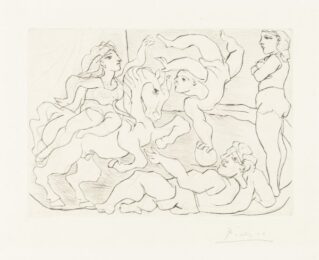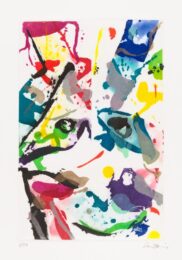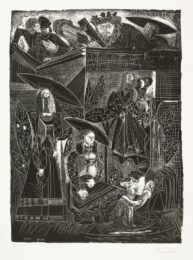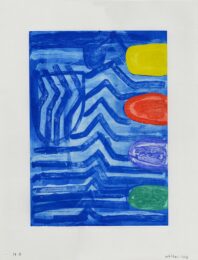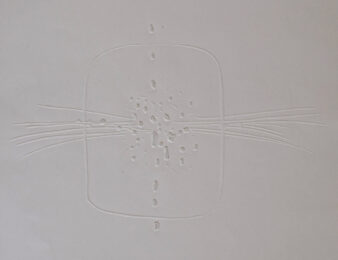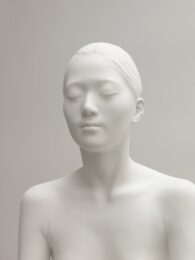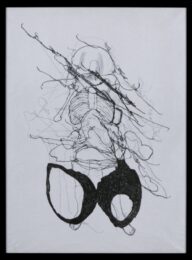Details — Click to read
Original etching and drypoint printed in black ink on laid paper.
Signed and dated in the plate lower left Rembrandt f. 1650 (the “d” reversed).
A strong, clear 17th century/lifetime impression of Bartsch, Hind, Biorklund-Barnard, Usticke and New Hollstein’s second and final state of this rare etching (characterized by G.W. Nowell-Usticke in his 1967 catalogue Rembrandt’s Etchings: States and Values as “a rare little landscape,” and assigned his scarcity rating of “RR+” [50-75 impressions extant in that year]), printed after the addition of the diagonal shading to the meadow behind the angler at the right, and the shading to the meadow at the edge of the wood at the left, showing touches of burr on the vertical shading in the water at the center.
Catalog: Bartsch 235 ii/ii; Hind 238 ii/ii; Biorklund-Barnard 50-A ii/ii; Usticke 235 ii/ii; New Hollstein 253 ii/ii
Rijksmuseum, Amsterdam; Museum het Rembrandthuis, Amsterdam; Kupferstichkabinett der Staatliche Museen, Berlin; Museum of Fine Arts, Boston; Kunsthalle Bremen; Herzog Anton, Ulrich Museum, Braunschweig; Cabinet des Estampes, Bibliothèque royale de Belgique, Brussels; Szépmüvészéti Museum, Budapest; Fitzwilliam Museum, Cambridge; The Art Institute of Chicago; Kunstsammlungen der Veste, Coburg; Statend Museum fur Kunst, Copenhagen; Kupferstich-Kabinett der Staaliche Kunstsammlungen, Dresden; Scottish National Museum, Edinburgh; Graphische Sammlung des Städel Museums, Frankfurt; Alte Galerie des Steiermärkischen Landesmuseums, Graz; Teylers Museum, Haarlem; Hamburger Kunsthalle, Hamburg; The Britsih Museum, London; State Pushkin Museum of Fine Arts, Moscow; Staatliche Graphische Sammlung, Munich; The Metropolitan Museum of Art, New York; The Morgan Library and Museum, New York; Ashmolean Museum, Oxford; Bibliothèque Nationale, Paris; Musée du Petit Palais, Paris; Musée du Louvre, Paris; Norton Simon Museum, Pasadena; The Frances Lehman Loeb Art Center, Vassar College, Poughkeepsie; The State Hermitage Museum, St. Petersburg; Musée Jenisch, Vevey; Vienna; The National Gallery of Art, Washington; Kunstsammlungen zu Weimar.
In this etching we see depicted in the middle ground one of the country homes of the tax collector Jan Uytenbogaert, the subject of Rembrandt’s portrait etching of 1639 “Jan Uytenbogaert, the Gold-Weigher” (Bartsch 281). This country home, west of Amsterdam proper is identified as the House with the Tower, even though here the dome and spire which can be seen in two other etchings depicting the house (B. 234, 236) have been removed leaving only the square tower. Rembrandt has taken somewhat uncharacteristic liberties with the landscape in which the house is positioned. Nearly all of the artist’s landscapes are records of real views. However, here he has taken the liberty to add a fantastic mountain view in the background, and the flat Dutch polder scene with fishermen in the foreground.

